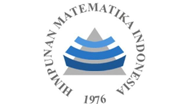Electroencephalogram Signal Analysis for Impulsivity Detection in Drug User Using K- Nearest Neighbor
Abstract
Keywords
Full Text:
PDFReferences
N. D. Volkow, M. Michaelides, and R. Baler, “The neuroscience of drug reward and addiction,” Physiol Rev, vol. 99, no. 4, pp. 2115–2140, 2019, doi: 10.1152/physrev.00014.2018.
P. Giovannelli and H. Pfister, “Neuro-circuitry of Impulsivity and its Relation to Substance Use Disorders,” Rev Psiquiatr Clín, vol. 50, no. 6, pp. 31–37, 2023, doi: 10.15761/0101-60830000000705.
X. Li, Y. He, D. Wang, and M. J. Rezaei, “Stroke rehabilitation: from diagnosis to therapy,” 2024, Frontiers Media SA. doi: 10.3389/fneur.2024.1402729.
W. Sliedrecht, H. G. Roozen, K. Witkiewitz, R. De Waart, and G. Dom, “The Association between Impulsivity and Relapse in Patients with Alcohol Use Disorder: A Literature Review,” Nov. 01, 2021, Oxford University Press. doi: 10.1093/alcalc/agaa132.
H. Soltanian-Zadeh, E. M. Sokhadze, O. R. Dobrushina, and G. Federico, “Simultaneous real-time EEG-fMRI neurofeedback: A systematic review.”
Z. Bin Akhtar and V. S. Rozario, “AI Perspectives Within Computational Neuroscience: EEG Integrations and the Human Brain,” Artificial Intelligence and Applications, vol. 3, no. 2, pp. 145–160, Apr. 2025, doi: 10.47852/bonviewAIA52024174.
A. S. Ginting, R. M. Simanjuntak, N. Lumbantoruan, and D. Sitanggang, “EEG Signal Classification using K-Nearest Neighbor Method to Measure Impulsivity Level,” Jurnal Sisfokom (Sistem Informasi dan Komputer), vol. 13, no. 2, pp. 261–266, Jun. 2024, doi: 10.32736/sisfokom.v13i2.2154.
N. Liladhar Rane, A. Tawde, S. P. Choudhary, and J. Rane, “Contribution and performance of ChatGPT and other Large Language Models (LLM) for scientific and research advancements: a double-edged sword”, doi: 10.56726/IRJMETS45312.
J. Vassileva, J.-H. Lee, E. Psederska, and W.-Y. Ahn, “Utility of computational approaches for precision psychiatry: Applications to substance use disorders.”
V. Khurana et al., “A Survey on Neuromarketing using EEG Signals.”
N. Jamil and A. N. Belkacem, “Advancing Real-Time Remote Learning: A Novel Paradigm for Cognitive Enhancement Using EEG and Eye-Tracking Analytics,” IEEE Access, vol. 12, pp. 93116–93132, 2024, doi: 10.1109/ACCESS.2024.3422926.
P. Hüpen, H. Kumar, A. Shymanskaya, R. Swaminathan, and U. Habel, “Impulsivity Classification Using EEG Power and Explainable Machine Learning,” Int J Neural Syst, vol. 33, no. 2, Feb. 2023, doi: 10.1142/S0129065723500065.
M. J. Antony et al., “Classification of EEG Using Adaptive SVM Classifier with CSP and Online Recursive Independent Component Analysis,” Sensors, vol. 22, no. 19, Oct. 2022, doi: 10.3390/s22197596.
P. Hüpen, H. Kumar, A. Shymanskaya, R. Swaminathan, and U. Habel, “Impulsivity Classification Using EEG Power and Explainable Machine Learning,” Int J Neural Syst, vol. 33, no. 2, Feb. 2023, doi: 10.1142/S0129065723500065.
V. Kotoula, J. W. Evans, C. E. Punturieri, and C. A. Zarate, “Review: The use of functional magnetic resonance imaging (fMRI) in clinical trials and experimental research studies for depression,” 2023, Frontiers Media SA. doi: 10.3389/fnimg.2023.1110258.
S. Ibna Abir et al., “Machine Learning and Deep Learning Techniques for EEG-Based Prediction of Psychiatric Disorders,” 2025, doi: 10.32996/jcsts.
A. Mausd et al., “EEG-Based Neurofeedback for ADHD in Children: Enhancing Attention and Reducing Impulsivity Using Machine Learning,” International Journal of Computing and Digital Systems, vol. 18, no. 1, 2025, doi: 10.12785/ijcds/1571139415.
N. K. Murungi, M. V. Pham, X. C. Dai, X. Qu, and C. Dai, “Empowering Computer Science Students in Electroencephalography (EEG) Analysis: A Review of Machine Learning Algorithms for EEG Datasets,” 2023. doi: XXXXXXX.XXXXXXX.
A. Frolli, E. Saviano, M. Ricci, S. L. Sica, and M. Romano, “Artificial Intelligence in ADHD treatment: a brief narrative review,” 2023.
J. S. Cerqueira, “Towards Personalized Therapy: Integrating Real-Time Eye Tracking and EEG to Improve VR-Based Therapeutic Interventions,” 2025.
C. W. You et al., “Trigger or Treat: Using Technology to Facilitate the Perception of Cravings and Corresponding Cues for Achieving Clinical-friendly Drug Psychotherapy,” Proc ACM Hum Comput Interact, vol. 7, no. 1 CSCW, Apr. 2023, doi: 10.1145/3579535.
A. M. Roffarello and L. De Russis, “Achieving Digital Wellbeing Through Digital Self-control Tools: A Systematic Review and Meta-analysis,” ACM Transactions on Computer-Human Interaction, vol. 30, no. 4, Sep. 2023, doi: 10.1145/3571810.
S. N. Saleem Kbah et al., “Review on Fundamental of Electroencephalography and Detection Techniques in Substance and Behavioral Addiction,” Journal of Human Centered Technology, vol. 4, no. 1, pp. 78–85, Feb. 2025, doi: 10.11113/humentech.v4n1.98.
A. S. Abdulbaqi, M. T. Younis, Y. T. Younus, and A. J. Obaid, “A hybrid technique for eeg signals evaluation and classification as a step towards to neurological and cerebral disorders diagnosis,” International Journal of Nonlinear Analysis and Applications, vol. 13, no. 1, pp. 773–781, 2022, doi: 10.22075/IJNAA.2022.5590.
A. Alhudhaif, “An effective classification framework for brain-computer interface system design based on combining of fNIRS and EEG signals,” PeerJ Comput Sci, vol. 7, pp. 1–24, 2021, doi: 10.7717/PEERJ-CS.537.
N. A. Tawhid, S. Siuly, K. Wang, and H. Wang, “Textural feature based intelligent approach for neurological abnormality detection from brain signal data,” PLoS One, vol. 17, no. 11 November, Nov. 2022, doi: 10.1371/journal.pone.0277555.
P. Kartha, P. P. Nair, R. Ann Reji, and S. S. Suresh, “Predicting Drug Addiction Using Multimodal Data Fusion and Machine Learning Techniques,” International Journal of Computer Science Trends and Technology (IJCST), vol. 12, [Online]. Available: www.ijcstjournal.org
B. M. S. Hasan and A. M. Abdulazeez, “A Review of Principal Component Analysis Algorithm for Dimensionality Reduction,” Journal of Soft Computing and Data Mining, vol. 2, no. 1, pp. 20–30, Apr. 2021, doi: 10.30880/jscdm.2021.02.01.003.
U. Khalid, M. Naeem, F. Stasolla, M. Syed, M. Abbas, and A. Coronato, “Impact of AI-Powered Solutions in Rehabilitation Process: Recent Improvements and Future Trends,” Int J Gen Med, vol. Volume 17, pp. 943–969, Mar. 2024, doi: 10.2147/ijgm.s453903.
Y. H. Chen, J. Yang, H. Wu, K. T. Beier, and M. Sawan, “Challenges and future trends in wearable closed-loop neuromodulation to efficiently treat methamphetamine addiction,” 2023, Frontiers Media S.A. doi: 10.3389/fpsyt.2023.1085036.
I. Lucas, N. Solé-Morata, I. Baenas, M. Rosinska, F. Fernández-Aranda, and S. Jiménez-Murcia, “Biofeedback Interventions for Impulsivity-related Processes in Addictive Disorders,” Sep. 01, 2023, Springer Science and Business Media Deutschland GmbH. doi: 10.1007/s40429-023-00499-y.
S. A. Alowais et al., “Revolutionizing healthcare: the role of artificial intelligence in clinical practice,” Dec. 01, 2023, BioMed Central Ltd. doi: 10.1186/s12909-023-04698-z.
DOI: http://dx.doi.org/10.30829/zero.v9i2.25542
Refbacks
- There are currently no refbacks.

This work is licensed under a Creative Commons Attribution-ShareAlike 4.0 International License.
Publisher : Department of Mathematics Faculty of Science and Technology Universitas Islam Negeri Sumatera Utara Medan | |
✉️ Email: zero_journal@uinsu.ac.id 📱 WhatsApp:085270009767 (Admin Official) | |
 |  |  |  |  |



